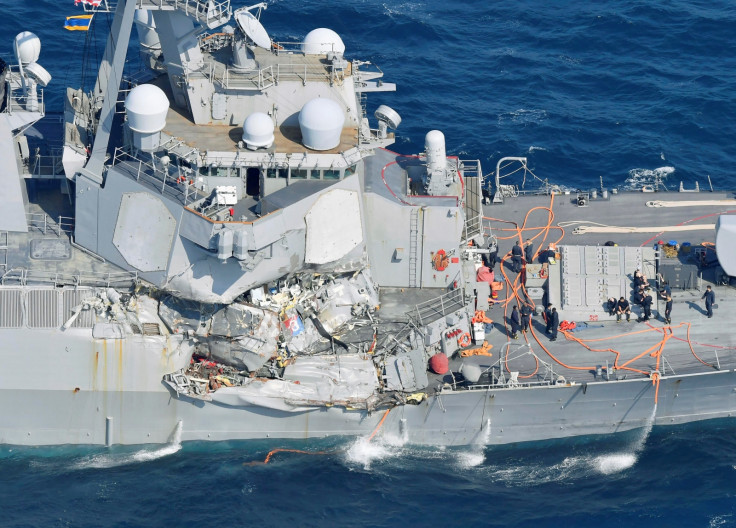Chinese media hopes US 'draws a lesson' on sea rules after destroyer crash killed 7 sailors
The Global Times editorial said the US sailors' failure to show prudence led to the USS Fitzgerald colliding with a merchant ship.
China's state-run news outlet has said that it hopes Washington "draws a lesson" on sea rules after a US Navy destroyer collided with a Philippine-flagged merchant ship in the coastal waters of Japan over the weekend.
While the US Navy is mourning the death of its seven sailors who lost their lives on board the USS Fitzgerald, the Global Times took no time to slam the sailors for being "careless".
The collision, said to be a rare one on the busy waterway, took place at some 56 nautical miles (103km) southwest of Yokosuka, Japan, early on 17 June. The maritime traffic in the passage is reported to be high, with 400 to 500 ships crossing every day.
Blaming the US ship for causing the collision, the publication said US vessels should exercise caution irrespective of how big the other vessels are.
"We hope all US warships in the West Pacific should draw a lesson from the incident, not only for their own safety, but also for the peace of the sea passages in the region," it said in its editorial on 19 June.
The USS Fitzgerald, which often sails in the West Pacific including the coastal waters of China, should start following certain rules to avoid collisions, it added.
The merchant vessel - ACX Crystal - carrying 1,080 containers and weighing 29,000 tonnes, suffered only minor damages while none of its 20 crew members suffered any injuries. It was four times the size of the US destroyer.
"It is an unspoken rule that the smaller ship should give way to the bigger one ... In the face of such a larger vessel, the Fitzgerald obviously did not show due prudence," the editorial said.
It also went on to say how the US ship should bear more responsibility for the collision as it failed to spot the much larger Philippine container ship first.

"Cargo ships often have lights on during night navigation so as to be identified from a long distance while the Fitzgerald is a small-sized destroyer which employs stealth technology."
The bodies of the US sailors were found in the flooded berth of the USS Fitzgerald once the ship was brought back to Yokosuka Naval Base.
Aerial footage from the scene showed the destroyer had a large dent in its starboard (or right) side above and below the waterline. Whereas, the 222m (730ft) long merchant ship sustained lighter damage to the port bow.
It is unclear how the collision happened, but marine traffic records showed that the container ship suddenly veered off its course and took a U-turn about 25 minutes before the collision. It is not known why it changed its direction.
"Given US' influence, no countries in the Asia-Pacific region want their vessels to get into trouble with US warships. This may have led to the US sailors' carelessness," the publication said.

ACX Crystal was reported to have been travelling at 14.6 knots (27km/h) at the time of the collision.
Describing the collision as "inconceivable", the Global Times also underscored how such an incident might have complicated the situation and triggered a geopolitical crisis had it been with Chinese or Russian vessels.
The Fitzgerald was on a routine mission at the time of the crash. It was sailing in the Japanese waters as part of the US' efforts against North Korea's missile and nuclear threats.
© Copyright IBTimes 2024. All rights reserved.





